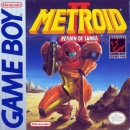http://kotaku.com/5476603/motion-control-in-gaming-rationalizing-a-new-dissonance
I posted this because I just saw it in my newspaper this morning (Kotaku articles are sometimes on the McCatchy-Tribune news wire).
Basically, the premise is that like graphics, as motion control gets close to but not exactly to human action, the minor differences will become the overwhelming part of the experience. This makes more limited and less exact motion also be potentially more "fun."
Could it be another case of style over technology?
Thoughts appreciated.
Mike from Morgantown
________________
Motion Control in Gaming: Rationalizing a New Dissonance
Everything changed in 2001, the year Nintendo decided that the future of gaming didn't lie in faster processors and photorealistic images, but in interaction.
Years later, when the Wii hit stores, it brought gaming and motion control to the masses, showing grandparents, gamers and soccer moms that video games disdn't have to be high-def to be fun and that controlling your games without buttons could be as amusing as it looked.
The Wii's success with motion control kick-started efforts by both Microsoft and Sony to make better, more realistic motion controls for the Playstation 3 and Xbox 360.
But something happened the first time I tried out Microsoft's high definition motion control system, Project Natal. Instead of waving a remote around wildly to smack a tennis ball or knock an in-game foe down with a digital sword, I found myself feeling disconnected from Microsoft's controller-free experience. I realized, as I played around with the Project Natal prototype, due to hit stores this year, that I was spending more time examining the game's reaction to my motions than I was having fun.
I had stumbled upon a kinetic dissonance in motion control gaming. This disconnect between the game and the player was made worse, not better, by Project Natal's more responsive controls. Until motion control is perfected, I realized, the pursuit to make it more precise in video games will result in titles that are less fun to play, not more.
This concept of an uncomfortable disconnect, a foreign familiarity, isn't new. In fact, Sigmund Freud had a word for it: Uncanny. And Roboticist Masahiro Mori used the term uncanny valley to describe the disconcerting reaction people had to robots as they became more human-like in their appearance.
The uncanny valley, ironically, became one of the chief stumbling blocks for game developers trying to make games that approached the threshold of photorealism. The idea is that as a game becomes more realistic the emotional response people have to it dives, leaving people slightly repulsed, until the game finally delivers graphics that are perfectly realistic.
To get around this, a game developer has to shoot for games that hit the peaks of either side of that uncanny valley, either by creating games that feature caricatures or completely realistic people.
Now, it seems, developers escaping the unavoidable graphics journey through the uncanny valley have stumbled upon a new uncanny valley, one marked not by appearance, but by motion.
And this kinetic dissonance isn't just an issue for Microsoft and Sony, both of which promise technology that will deliver more precise, more realistic, motion gaming. Last year, Nintendo released an add-on for their motion-sensing remote designed to make the peripheral better at detecting movement.
While more than a dozen games have already shipped for the new device, March will see the release of Ubisoft's Red Steel 2, a game that will likely define the potential of MotionPlus.
Roman Campos Oriola, the game's lead designer, says the team is well aware of the issues motion control faces in terms of quasi realism.
"With motion a game is much more accessible for players" Oriola said. "The problem with motion is that you can quickly fall into the issue of having too much repetition or too much of a simulation."
If, he explains, they had decided to make the gun-shooting, sword-wielding gameplay of Red Steel 2 a perfect motion simulator it wouldn't have felt right.
"If you give too much to the player they might start to wonder why you don't feel the weight of the sword or the knock back when you hit something," he said.
In other words, as the motion approaches realism, gamers began to pay more attention to the dissimilarities than the similarities.
So Oriola and his team decided to design the game around that first peak approaching the uncanny valley of motion, instead of risking a journey through it.
While Red Steel 2 has moments of one-to-one control, like when a player pulls out the sword while not in battle, the meat of the game, the action moments, instead rely on a caricature of motion. When a player slashes with the sword in combat, the game recognizes the direction and speed, but instead of using the exact pathway of the motion, it uses that data to trigger a pre-rendered animation.
It's not the sort of thing that a player will likely notice, but the result is a sort of cartoonish movement as opposed to a realistic one.
"We have the technology to do one-to-one motion, but then you have that strange feeling of being too precise," he said.
Oriola says that Microsoft's Project Natal, and Sony's motion controller, which he called theArc, offer a much wider variety of motion capturing than does the Wii. But he says he isn't sure yet if that means that those two systems could deliver true motion that doesn't feel uncanny.
"So far, from what I can tell, the Wii, going to a full, exact replication of movement is not the right way to do it," he said.
Aaron Greenberg, director of product management for Xbox 360 and Xbox Live, believes that Project Natal's ability to see and track your entire body and then translate that into in-game movement lands their motion control safely on the other side of the uncanny valley.
"I haven't felt" a disconnect," he said. "The types of experiences the team is focused on creating, the accuracy of them is pretty amazing.
"If you really reall think about it, the beauty of this is that the technology disappears. We've been spending so many years, trying to teach more and more people how to use technology. Now we are teaching the technology how to learn humans."
But the best way to use motion control, Oriola believes, is for it to highlight whatever the "fantasy of your game" is.
In Red Steel 2, that means the fantasy of being a samurai, of using a sword with broad, strong, quick slashes. If the team were to make a game about, say, fencing, it would be the precise wrist motions that deliver parries, counters and quick attacks.
"In that game all of the stuff about power wouldn't be interesting," he said. " They key is figuring out the line between the simulation and the fantasy."
The biggest risk motion control faces is that the paradoxical nature of that uncanny disconnect may lead gamers and developers to believe that the basic concept is flawed. In other words, if game developers get it wrong enough, people won't want it anymore, no matter how good it eventually gets.
Well Played is a weekly news and opinion column about the big stories of the week in the gaming industry and its bigger impact on things to come. Feel free to join in the discussion.
 I am Mario. I am Mario.I like to jump around, and would lead a fairly serene and aimless existence if it weren't for my friends always getting into trouble. I love to help out, even when it puts me at risk. I seem to make friends with people who just can't stay out of trouble. Wii Friend Code: 1624 6601 1126 1492 NNID: Mike_INTV |


































